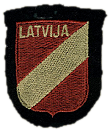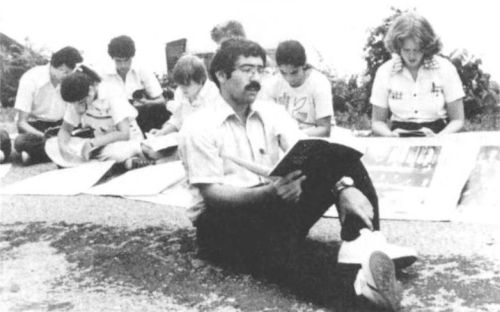Rochelle Saidel in her Outraged Conscience1 documents Rabbi Paul Silton's obsession with Vilis Hāzners' guilt and alleged escape from justice, including the threat of Jews taking matters into their own hands to exact justice on Hāzners. Our emphasis.
Deportation hearing proceedings proved Hāzners could not have been present where and when alleged. Moreover, Hāzners was never stationed at the Rīga Central Prison or a police chief in Rīga in any capacity.Demonstrators used toothbrushes to scrub the pavement, re-enacted eyewitness accounts that Hazners forced Jews to do likewise in the courtyard of the Riga police station, where he was a Latvian police chief under the Nazis. They also carried placards with photos of concentration camp victims and Biblical quotations. Hazners, then seventy-four, was not at home during the protest. (A neighbor said that he had left for a doctor's appointment, but family members were in the house.)
A third demonstration at Hazners' home, organized by the rabbi [Paul Silton] on November 4, 1979, was nationally televised in January, 1980 on the ABC News closeup entitled “Escape from Justice: Nazi War Criminals in America.” Some fifty members of the Jewish Students Coalition-Hillel organization at State University of New York at Albany prayed, sang, and carried placards. The demonstrators also carried a coffin to symbolize the victims of the Nazis.
When Silton learned in June, 1980 that the government had lost the Hazners case, he was furious and told me, “I would not be surprised, now that the voice of reason and the pursuit of justice are not successful, if I were to hear that the issue is dealt with in less popular ways—ways that might be most embarrassing to the pseudo-liberal leadership that heads American Jewry.”
The rabbi became so consumed that he even hallucinated: “I was driving, and saw a Chassid in a van,” he told me in June, 1980. “Suddenly I saw his face on a photograph of young Chassidim in Poland, being taunted by the Nazis. It was almost like a religious experience—sthe one scene came out of looking at the man in the van. To think that only forty years ago this whole culture flourished in Europe, and now there’s not even trace.”
Admitting that “this thing is eating me up alive,” the rabbi said, “I keep telling myself, ‘Silton, give it up; what are you accomplishing?’” But he also complained to me that he was “a slave to my job, my family, when what I really want is to work on this issue.”
So Rabbi Silton continue to pursue the issue as he went about his other duties. As the area’s only mohel (ritual circumciser), he often traveled to remote corners of upstate New York. While talking with families and guests at these rites, and on other occasions, he sometimes got leads on alleged Nazis or potential witnesses. Grasping at any straw, he tracked them down in his rather unmethodical manner. At one point, he even paid a private detective for surveillance of Hazners. The result: loss of money, and no information.
. . .
“I don’t like to feel helpless and let time take care of the Nazi situation. I think we have to act in the short time that we have on earth,” the rabbi says. Sometimes he even talks of starting “some kind of vigilante group.”
Saidel continues with the story of Silton, fantasizing about drastic action (above), frustrated that he was speaking the truth and no one was listening, meeting with éxposé authors such as Charles R. Allen, Jr., and going to Washington to browbeat authorities into pursuing the Nazi-American infestation.
| 1 | Outraged Conscience, pp. 209-212. |

